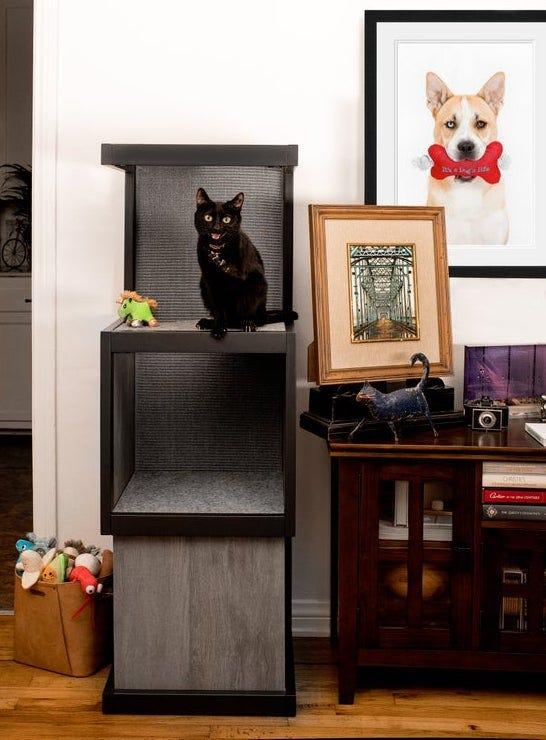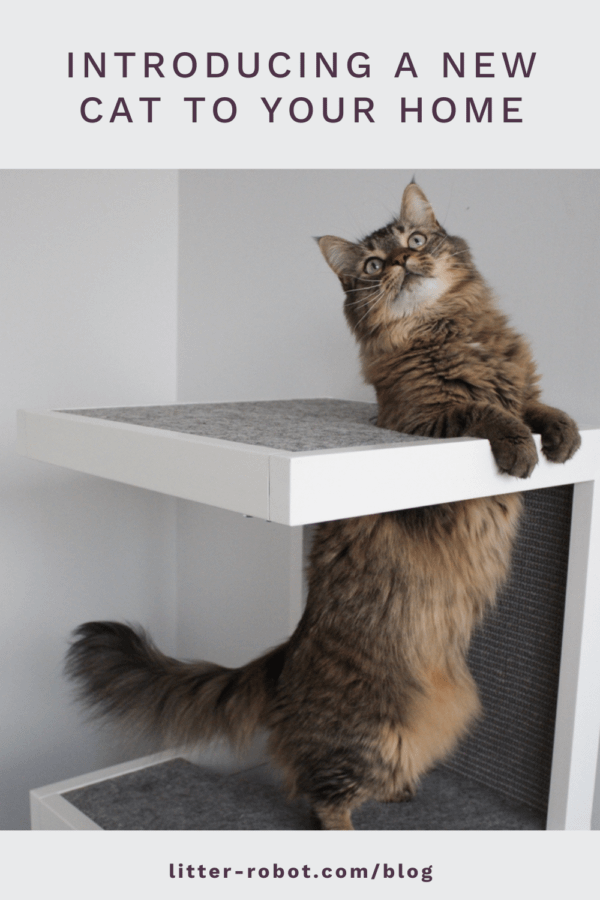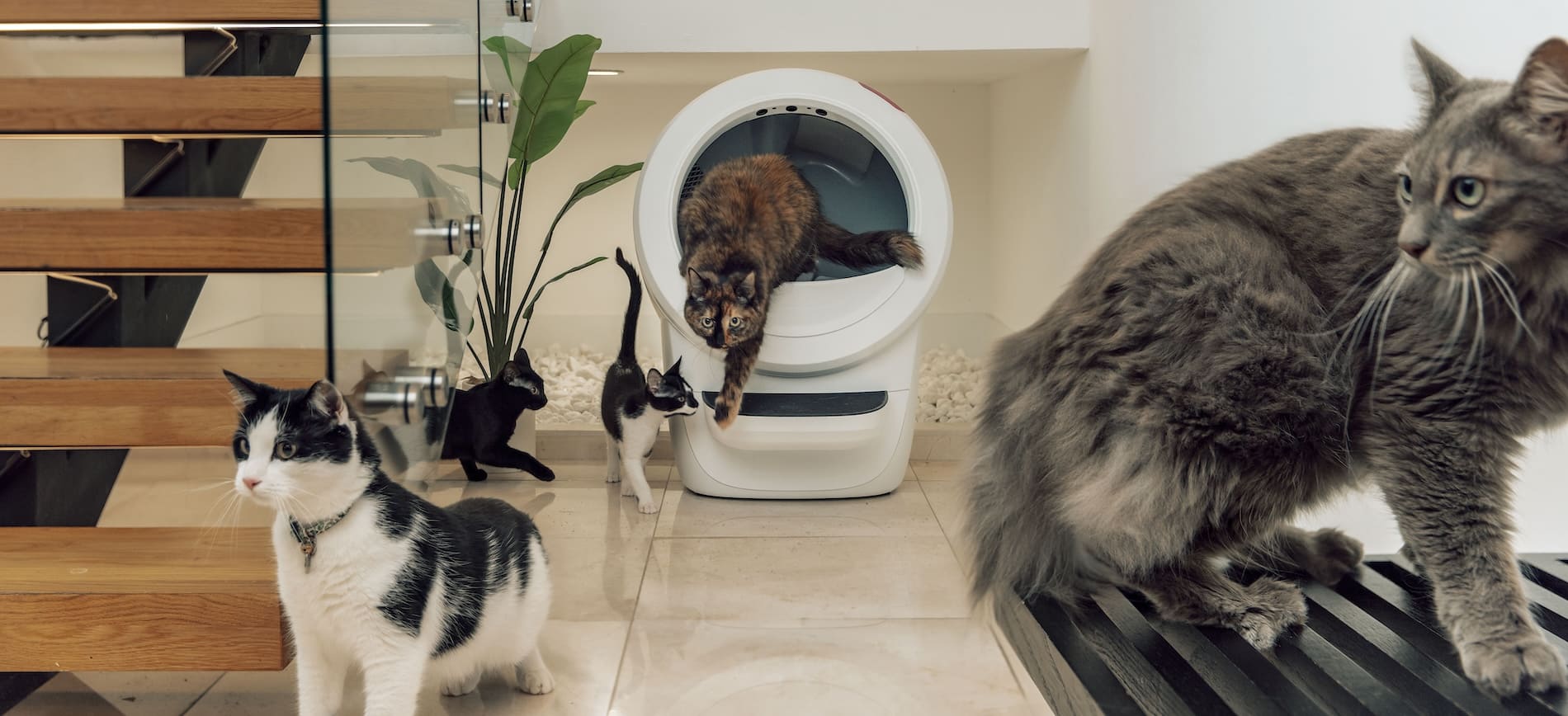Bringing a new cat into your home is exciting, but it can also be stressful for them to enter an unfamiliar space. It’s important to make your new cat and other animals feel secure to avoid stress and conflict. With a little intentional planning, you’ll be able to create a smooth transition into your household. This guide is going to give you tips on introducing a new cat to your home.
Of course, make sure you read our guide on adopting a cat so you're fully prepared on what to expect!
What to do before you bring your cat home
To ease integration into your home, take into consideration the background your cat came from. Was he or she in a cage, a foster home, outside? Were there other animals around or children? Know the environment your cat comes from so you don't change all these factors at once. Do your best to maintain your pet’s previous routine and make adjustments over time.
A few other things you should do before introducing a new cat to your home is create a safe space for them to have alone time. Set up a feeding station, water bowls, as well as a litter box. Get cat beds, toys, collars with ID tags, scratching posts, and treats.
Bringing home your new family member
There are a few important things you should do when it comes to bringing home a new pet family member to ensure a smooth transition for both of you.
Visit the vet
Anytime you bring home a newly adopted cat or kitten, it's important to take them to the vet as soon as possible for standard testing—especially if they lived outdoors or were around other cats. This way you can avoid spreading any serious communicable diseases to your other pets. The vet will perform standard tests like treatments for parasites, fecal analysis, and vaccinations. As soon as your vet says it’s safe, you should spay or neuter your kitten and microchip them if desired. Microchips are a good idea for indoor cats as well as outdoor cats, as accidents can happen and microchips help locate your pet easier if they go missing.
Create a safe space
Cats by nature need a place to get alone time and decompress. When introducing a new cat to your home, it's important to create a safe space and encourage them to get acclimated to it. Treats can help with that! Set up their litter box before they arrive and introduce them to it right away.
Keeping a clean litter box is important to stop accidents outside the litter box. An easy way to create a space for your cat as well as a private litter box spot is with hidden litter box furniture. You can also add modern cat furniture to your home while giving your new cat a hiding spot or cat tree.
If you have other pets in the house, be sure to quarantine your new cat in their own room. This way you can get results from the vet, as well as slowly transition your pet household into getting to know one another.

Spend time together
Set aside dedicated time to be with your cat so they feel a sense of security. You may even want to schedule time off work to help your cat or kitten get used to their new environment. A new home is a lot to take on for kitties!
Delay introduction to pets or people
Give your new addition time to adjust to their environment before introducing them to small children or other pets. 10-12 weeks is the sweet spot for beginning full-scale introduction into your home and family, including generous amounts of human contact and handling. This will also help your cat and other pets get used to each other's scent, aiding in the introduction process.
Slowly introduce
Introducing a new cat to your home is one thing—introducing them to your other pets is quite another. After your pets get used to each other’s scent around the house, slowly start introducing them. Use a baby gate between pets to offer a slow integration and let them get familiar with each other's sight and scent up close. Socializing your kitten is a vital part of their growth.
Supervise interactions with other animals
Some pets may be more tolerant of your new addition than others, so it's important to start with short, supervised interactions and increase the length of interactions together over time.
Keep a close eye on your animals and address any aggressive or negative behaviors immediately. Never punish cats for negative behaviors—instead, offer treats when they have friendly interaction to reinforce the positive behavior.
Provide mental stimulation
Cats are intelligent creatures and need mental stimulation to keep them happy and healthy. Cats need to challenge their minds, and can do so with scratching pads, toys, and a cat pyramid! This will also help keep them from ruining your furniture or carpet.
Is it normal for cats to fight when they first meet?
It can take cats several months or even years to develop a relationship with each other. Although some cats do become friends quickly, some never do. Certain cats can be more aggressive and may not take well to your new addition, causing fights between your cats early on. Most cats that don't develop a relationship will just learn to avoid each other. Learn more about introducing cats to each other.
What to do when your new cat is scared
Your new cat will likely experience some stress when they first arrive. It’s important to recognize the signs of stress to help put your kitty at ease. Signs of stress include decreased appetite, decreased grooming, lack of interest in affection or attention, hiding, biting, or other forms of aggression. If you find that your kitten is highly skittish, we have more tips on how to help put them at ease.
Set your new cat up for a positive introduction to your home
When introducing a new cat to your home, be patient with them and any other animals in the home, as it will take everyone some time to adjust. The simple steps in this guide will help you and your kitty have a positive start to all the changes happening!
Keep your cat stimulated physically and mentally with a cat tower. This modern cat tree will provide them with a space to relax and destress, get an overview of the room from a safe vantage point, and even spend time with other cats in the household!





